Download Cisco Systems CGR1120K9 Installation & Configuration Guide
Transcript
Cisco Connected Grid Modules for
CGR 1000 Series—WiMAX Installation and
Configuration Guide
First Published: September 2012
Last Updated: June 2013
OL-26236-03
This document provides an overview of hardware and configuration information for Cisco Connected
Grid Modules for CGR 1000 Series—WiMAX.
The WiMAX module provides the Wide-Area Network (WAN) connection for critical data applications
in supporting the Connected-Grid Router (CGR) as a backup data link for critical data applications.
This document contains the following topics:
Warning
•
Parts List, page 2
•
Features, page 4
•
Hardware Overview, page 5
•
Installing and Removing the WiMAX Module, page 11
•
Standards, page 13
•
Regulatory and Compliance Information, page 13
•
Software Overview, page 13
•
Configuring the Module, page 17
•
Troubleshooting and Diagnostics, page 23
•
Additional References, page 26
•
Feature History, page 27
•
Technical Assistance, page 28
•
Tell Us What You Think, page 28
Only trained and qualified personnel should be allowed to install, replace, or service this equipment.
Statement 1030
Cisco Systems, Inc.
www.cisco.com
Parts List
Cisco Connected Grid Modules for CGR 1000 Series—WiMAX
284549
Figure 1
Parts List
Your WiMAX module kit contains one the following WiMAX radio modules. Parts can be ordered by
referencing the following information shown in Table 1:
Table 1
Kit Contents for WiMAX module
Cisco Part Number
Description
CGM-WIMAX-1.8
WiMAX 1.8 GHz band, subscriber station radio module
CGM-WIMAX-2.3
WiMAX 2.3 GHz band, subscriber station radio module
CAB-L240-10-Q-N
Internal cable, RA-QMA(m) to N(m), LMR-240-FR, 10’, quantity 1
CAB-L100-17-Q-M
Internal cable, RA-QMA(m) to RA-MCX (m), LMR-100, 17.5", quantity 2
CAB-L400-20-N-N
Outdoor cable, RA-N(m)-N(m), LMR-400-DB, 20’, quantity 2
CAB-L600-30-N-N
Outdoor cable, RA-N(m)-N(m), LMR-600-DB, 30’, quantity 2
CGR-LA-NF-NF
Lightning arrestor, N(f)-N(f), quantity 2
ANT-1.8-PNL-OUT-N
Flat-panel antenna, 1800 to 1830 MHz, 15 dBi, N(f), dual-slant, quantity 1
ANT-2.X-PNL-OUT-N
Flat-panel antenna, 2.3 to 2.7 GHz, 17 dBi, N(f), dual-slant, quantity 1
CGR-LA-NM-NF
Bulkhead adapter, MCX(f) receptacle, N(f), quantity 2 and lightning
arrestor, DC Pass, N(m)-N(f), quantity 2
CGR-N-CONN-WIMAX
N-connector kit: LMR-400 cable, weather-proof cap, coaxial seal,
electrical-joint compound (used with external antennas and WiMAX
module)
For system requirements, important notes, limitations, open and resolved bugs, and last-minute
documentation updates, see the Release Notes on Cisco.com. For translations of the warnings that appear
in this document, see the Regulatory Compliance and Safety Information document for your router on
Cisco.com.
Cisco Connected Grid Modules for CGR 1000 Series—WiMAX Installation and Configuration Guide
2
OL-26236-03
Parts List
When using the online publications, see the documents that match the Cisco system software version
running on the wireless module.
Cisco Connected Grid Modules for CGR 1000 Series—WiMAX Installation and Configuration Guide
OL-26236-03
3
Features
Features
Cisco Connected Grid Modules for CGR 1000 Series—WiMAX offers the following key features:
Table 2
Feature Information for WiMAX module
Feature
Description
WiMAX technology standard
IEEE 802.16e
Bands
1.4 GHz band: 1390 to 1510 MGhz (CGM-WIMAX-1.4GHz)
1.8 GHz band: 1800 to 1830 MHz (CGM-WIMAX-1.8GHz)
2.3 GHz bands: 2300 to 2360 MHz (CGM-WIMAX-2.3GHz)
3.65 GHz bands: 3300 to 3800 MHz (CGM-WIMAX-3.65GHz)
Note
The WiMAX module is capable of operation in the listed
frequency band and its hardware can be configured for
operation in one band at a time by way of circuit board
assembly option.
Mobile Broadband Wireless
Access System
IEEE 802.16e-2009
Two antenna ports
50 ohms impedance, QMA connector (jack).
Operation mode
TDD (Time Division Duplex)
Channel bandwidth
3.5, 5.0, 7.0, and 10 MHz
Number of transmitters
2
Number of receivers
2 (MRC and CL-MIMO)
Maximum transmit power
23 dBm per transmit stream, 2 streams
Security
Data rates
•
PkmV2
•
Authentication: EAP-TLS and EAP-TTLS
•
Digital certificate
•
The actual throughput rates depends on many different factors,
but the theoretical rates for the technologies follows:
•
Mobile WiMAX technology to support peak DL data rates up to
63 Mbps per sector and peak UL data rates up to 28 Mbps per
sector in a 10 MHz channel.
Authentication
Hash-based Message Authentication Code (HMAC) and
Cipher-based MAC (CMAC) support.
Module management
Enables you to access modem software and hardware information,
radio and network status, and data profile information by using Cisco
commands.
Antenna
Multiple antenna and cable options:
•
Separate dual antennas or dual-polarized antenna
•
Chassis integrated and outdoor externally mounted antennas
•
Radio Frequency Ultra-Low Loss (RF-ULL) coaxial cable
Cisco Connected Grid Modules for CGR 1000 Series—WiMAX Installation and Configuration Guide
4
OL-26236-03
Hardware Overview
Table 2
Feature Information for WiMAX module (continued)
Feature
Description
WiMAX IP and Ethernet
Convergence Sublayer
Allows a WiMAX network to provide Ethernet service directly to
customers.
Frequency resolution
0.25 MHz
Antenna connectors
1 pair of antenna connectors; 50 ohms; QMA female (jack)
Antenna diversity support
1x2 STC/MIMO-SM [Matrix A], or 2x2 STC/MIMO-SM [Matrix B]
Linear output transmit power
(average power):
One of the following:
Transmit power control range
Modulation/coding
Linear output power
•
23 dBm, maximum, one spatial stream at room temperature
•
23 dBm, maximum, each, two spatial streams
10 dB minimum
•
Support all configuration defined in WiMAX system profile 1.0
for DL up to QAM 64 5 /6
•
Support all configuration defined in WiMAX system profile 1.0
for UL up to QAM 64 5 /6
The module supports up to 23 dBm nominal per spatial stream at
room temperature
Forward Error Correction Code
(FEC)
•
CC (Convolutional Codes)—1/2 to 3/4
•
CTC (Convolutional Turbo Codes)—1/2 to 5/6
Dynamic range
•
Tx dynamic range: 43 dB (-20 dBm to 23 dBm)
•
Rx dynamic range: 70 dB (-100 dBm to -30 dBm)
Mean time before failure
(MTBF)
Calculate in accordance with Telecordia SR332
Hardware Overview
The WiMAX module is designed to be installed into the CGR 1000 Series Routers ruggedized
routers/concentrators designed for deployments in secondary substations within the electric utility
distribution grid. The WiMAX module is used mainly for uplink to the Neighborhood Area Network
(NAN) within the Smart Grid environment.
The main function of the WiMAX module is the WAN uplink over wireless 2.3GHz band in Distribution
Automation and AMI concentrator deployment. The WiMAX module runs on CG-OS.
This section covers the following topics:
•
Front Panel, page 6
•
Supported Cisco WiMAX Antennas, page 7
•
Mechanical Specifications, page 8
•
WiMAX Interface, page 8
•
Module States, page 9
•
Radio Frequency Interface, page 10
•
DC Power Consumption, page 10
Cisco Connected Grid Modules for CGR 1000 Series—WiMAX Installation and Configuration Guide
OL-26236-03
5
Hardware Overview
•
Temperature Monitoring State Machine, page 10
•
Module Power States, page 10
Front Panel
Figure 2 shows the front panel components of the WiMAX module.
Front Panel of the WiMAX Module
1
2
1
284550
Figure 2
3
1
Captive screws (2)
3
LEDs (WWAN, SVC, RSSI)
2
QMA(f) connector (2)
Cisco Connected Grid Modules for CGR 1000 Series—WiMAX Installation and Configuration Guide
6
OL-26236-03
Hardware Overview
Supported Cisco WiMAX Antennas
The antenna is connected to the QMA, panel-mount, 50-ohm connector located on the faceplate of the
module.
For more information about antennas, including installation procedures, see Cisco 1240 and 1120
Connected Grid Router Hardware Installation Guide.
Table 3 lists the Cisco antennas that are supported for use with the module and the Cisco 1240 Connected
Grid Router.
Table 3
CGR 1240—Supported Antennas and Cables for the WiMAX Module
Cisco 1240 Connected Grid Router
Case
Description Internal Cable
Adapter or Lightning
Arrestor
WiMAX
1.4 GHz
external
antenna
(2) LMR-100, 17.5”,
37-1380-01,
CAB-L100-17-Q-M
WiMAX
1.4 GHz
integrated
antenna
(2) LMR-100, 17.5”, —
37-1380-01,
CAB-L100-17-Q-M
WiMAX
1.8 GHz
external
antenna
(2) LMR-100,
17.5”’, 37-1380-01,
CAB-L100-17-Q-M
WiMAX
1.8 GHz
integrated
antenna
(2) LMR-100, 17.5”, —
37-1380-01,
CAB-L100-17-Q-M
WiMAX
2.3GHz
external
Antenna
(2) LMR-100, 17.5”,
37-1380-01,
CAB-L100-17-Q-M
WiMAX
2.3 GHz
integrated
antenna
(2) LMR-100, 17.5”, —
37-1380-01,
CAB-L100-17-Q-M
•
(2) N Bulkhead
Adapters, 29-5950-01
•
(2) Lightning
Arrestors, 07-1091-01,
CGR-LA-NM-NF
Outdoor Cable
Antenna
(2) LMR-400-DB, 20’,
37-1392-01,
CAB-L400-20-N-N
(1) Flat-panel antenna,
1390-1465 MHz, 13 dBi,
dual slant, 07-1218-01,
ANT-1.4-PNL-OUT-N
—
(2) Monopole antennas,
1350-1525 MHz, chassis
mounted, omnidirectional,
07-1140-02,
ANT-WM-INT-OUT-M
•
(2) N Bulkhead
Adapters, 29-5950-01
•
(2) LMR-400-DB, 20’
CAB-L400-20-N-N
•
(2) Lightning
Arrestors, 07-1091-01,
CGR-LA-NM-NF
•
(2) LMR-600B-DB, 30’,
CAB-L600-30-N-N
—
(2) Integrated antennas,
07-1140-02
•
(2) N Bulkhead
Adapters, 29-5950-01
•
(2) LMR-400-DB, 20’
CAB-L400-20-N-N
•
(2) Lightning
Arrestors, 07-1091-01,
CGR-LA-NM-NF
•
(2) LMR-600B-DB, 30’
CAB-L600-30-N-N
—
(1) Flat-panel antenna,
1800-1830 MHz, 15 dBi,
dual slant, 07-1159-01,
ANT-1.8-PNL-OUT-N
(1) Flat-panel antenna,
2300-2700 MHz, 17 dBi,
dual slant, 07-1160-01,
ANT-2.X-PNL-OUT-N
(2) Integrated antennas,
07-1140-02
Cisco Connected Grid Modules for CGR 1000 Series—WiMAX Installation and Configuration Guide
OL-26236-03
7
Hardware Overview
Table 3
CGR 1240—Supported Antennas and Cables for the WiMAX Module
Cisco 1240 Connected Grid Router
Case
Description Internal Cable
Adapter or Lightning
Arrestor
WiMAX
3.65 GHz
external
antenna
(2) LMR-100, 17.5”,
37-1380-01,
CAB-L100-17-Q-M
WiMAX
3.65 GHz
integrated
antenna
(2) LMR-100, 17.5”, —
37-1380-01,
CAB-L100-17-Q-M
Outdoor Cable
•
(2) N Bulkhead
Adapters, 29-5950-01
•
LMR-400-DB, 20’
CAB-L400-20-N-N
•
(2) Lightning
Arrestors, 07-1091-01,
CGR-LA-NM-NF
•
LMR-600B-DB, 30’
CAB-L600-30-N-N
—
Antenna
(1) Flat-panel antenna,
3300-3800 MHz, 18.5 dBi,
dual slant, 07-1161-01,
ANT-3.X-PNL-OUT-N
(2) Monopole antennas,
3300-3800 MHz, chassis
mounted, omnidirectional,
07-1142-02,
ANT-WM-INT-OUT-M
Mechanical Specifications
The following are the mechanical specifications of the WiMAX module.
Table 4
Mechanical, Power, Environmental Standards
Feature
Description
Operating temperature of the CGR 1240 -40 to 158-degrees F (-40 to 70-degrees C)
(WiMAX module installed)
Power consumption
EMC
Radio
•
8 W maximum over temperature
•
12 V DC +/- 5% (+/- .6 V)
•
3.3V DC +/- 5% (+/- .6 V) average (with 70% Tx duty
cycle)
FCC Part 15, Subpart B, Class B
•
Industry Canada SRSP-301.7 for 1.8 GHz
•
FCC Part 27 for 2.3 GHz
•
FCC Part 90Z for 3.65 to 3.7 GHz
WiMAX Interface
The WiMAX module performs the following responsibilities:
•
Transmitting the receiving data packets
•
Controlling and configuring WiMAX radio and Media Access Control (MAC) parameters
•
Collecting statistics from radio
•
Process alarms
•
Registering and authenticating with the WiMAX network
•
Scanning for and choosing the base station (BS)
Cisco Connected Grid Modules for CGR 1000 Series—WiMAX Installation and Configuration Guide
8
OL-26236-03
Hardware Overview
The module provides two physical connectors for antennas.
Module States
The WiMAX module has the following states:
Table 5
WiMAX Module States
State
Description
Configured
In this state the WiMAX module has all the necessary configuration information
and can be started by the port manager. Modifications to configuration
parameters using the configuration file require re-initialization of the WiMAX
module.
Input signal(s):
MAC start
•
Action—Starts the MAC process
•
Next state—Disconnected
Configuration error
•
Action—Send message
•
Next state—Initializing
This state corresponds to the port manager configured state.
Disconnected
Corresponds to the Interface Down state.
Exit Criteria: Start of Scanning.
Scanning
This state is internal to the WiMAX module and does not need to be exposed to
the port manager other than for debug purposes.
Exit criteria: BS found or stop scanning signal from the Port manager.
Connecting
This state is internal to the WiMAX module and does not need to be exposed to
the port manager other than for debug purposes.
Exit criteria: finished SBC message exchange.
Authenticating
This state is internal to the WiMAX module and does not need to be exposed to
the port manager other than for debug purposes.
Connected
In this state the WiMAX module has at least one SF each in the DL and UL. This
SF is called the Initial service flow (ISF). Additional SF may be created by the
BS as required.
This state is exposed to the port manager. The method of exposing this state to
the port manager is TBD; need to review the code to determine if there and
explicit message or the Module needs to be polled.
Cisco Connected Grid Modules for CGR 1000 Series—WiMAX Installation and Configuration Guide
OL-26236-03
9
Hardware Overview
Radio Frequency Interface
The Radio Frequency (RF) interface consists of two QMA connectors on the faceplate labeled MAIN and
AUX. Both antennas are mandatory; it both transmits and receives RF. The second AUX QMA connector
is for the optional RX Diversity.
DC Power Consumption
The average DC power consumption according to the duty cycle is as follows:
Table 6
Power Specifications WiMAX 1.8 MHz Module
Transmit Duty Cycle
(Tx/Rx)
1 Transmit Spatial Stream
2 Transmit Spatial Streams
40%/60%
3.7 W
5.3 W
Temperature Monitoring State Machine
The state machine in the WiMAX module monitors the embedded module temperature. The command
show environment temperature shows the module temperature in Celsius. For example, the
temperature sensor of the WIMAX module shows as 46-degrees Celsius.
# show module
Mod Ports Module-Type
--- ----- ----------------------------------1
0
CGR1000 Supervisor Module
2
9
CGR1000 Ethernet Module
3
1
Connected Grid Module - IEEE 802.16
4
1
Connected Grid Module - IEEE 802.15
Model
-----------------CGR1120/K9
CGR1000
CGM-WIMAX-1.8GHZ
CGM-WPAN-FSK-NA
Status
---------active *
ok
ok
ok
# sh environment temperature
Temperature:
-------------------------------------------------------------------Module
Sensor
MajorThresh
MinorThres
CurTemp
Status
(Celsius)
(Celsius)
(Celsius)
-------------------------------------------------------------------1
Sensor0
75
60
44
Ok
3
Sensor0
75
60
46
Ok
4
Sensor0
75
60
46
Ok
Module Power States
The module has the following power states:
•
Normal mode—Module is active. Receive and Transmit modes are possible. In this state:
– The module is fully powered.
– The module is capable of placing/receiving calls or establishing data connections on the
wireless network.
– The USB interface is fully active.
Cisco Connected Grid Modules for CGR 1000 Series—WiMAX Installation and Configuration Guide
10
OL-26236-03
Installing and Removing the WiMAX Module
Note
•
The module unit defaults to the Normal state when VCC is first applied.
Disconnected mode—No power to the module. The host power source is disconnected from the
module and all voltages associated with the module are at 0 V.
CGR 1120 and CGR 1240 controls the power to the module, therefore the host can stay powered on
and cut the power in order to put the module into the disconnected state.
Installing and Removing the WiMAX Module
Note
After replacing or installing a module in the router, you must update the label (on the router exterior)
that lists the module types contained in the router. The label must list the FCC ID number and the IC
Certification number for each module installed in the router.
This section covers the following topics:
•
Before You Begin Installation, page 11
•
Installation Warning Statements, page 11
•
Installing the WiMAX Module, page 12
•
Removing the WiMAX Module, page 12
Before You Begin Installation
Before installing the module, verify that the following guidelines have been met:
•
Clearance to the I/O-side view is such that the LEDs can be easily read.
•
Cabling is away from sources of electrical noise, such as radios, power lines, and fluorescent
lighting fixtures. Make sure that the cabling is away from other devices that might damage the
cables.
•
Airflow around the unit and through the vents is unrestricted.
•
Relative humidity around the unit does not exceed 95 percent (non-condensing).
•
Altitude at the installation site is not higher than 10,000 feet.
•
For 10/100 and 10/100/1000 fixed ports, cable lengths from the unit to connected devices are not
longer than 328 feet (100 meters).
Installation Warning Statements
This section includes the basic installation warning statements. Translations of these warning statements
appear in the Regulatory Compliance and Safety Information for Cisco Connected Grid Router 1000
Series Routers documents.
Warning
Only trained and qualified personnel should be allowed to install, replace, or service this equipment.
Statement 1030
Cisco Connected Grid Modules for CGR 1000 Series—WiMAX Installation and Configuration Guide
OL-26236-03
11
Installing and Removing the WiMAX Module
Warning
To prevent airflow restriction, allow clearance around the ventilation openings to be at least: 1.75 in.
(4.4 cm) Statement 1076
Installing the WiMAX Module
The WiMAX module can be installed into any slot of the CGR 1240, however Slot 6 is recommended
due to the ease of installing the available cable.
Note
Some WiMAX modules are installed into the host router at the factory.
To install the module into an available slot in the Cisco Connected Grid 1120 Router or the Cisco
Connected Grid 1240 Router:
Note
The module can be hot swapped because module online insertion removal (OIR) is allowed—it is not
necessary to power down the router.
Step 1
Before you install (or remove) the Connected Grid WiMAX module from the host router, read the
instructions about installing and removing modules in the Hardware Installation Guide of your router.
Step 2
Insert the WiMAX module in the slot.
Step 3
Using a screwdriver, secure the two captive screws into place.
Removing the WiMAX Module
To remove the WiMAX module from a slot in the Cisco Connected Grid 1120 Router or the Cisco
Connected Grid 1240 Router:
Note
The module can be hot swapped because module online insertion removal (OIR) is allowed—it is not
necessary to power down the router.
Step 1
Before you remove the Connected Grid WiMAX module from the host router, read the instructions about
installing and removing modules in the Hardware Installation Guide of your router.
Step 2
Using a screwdriver, loosen the two captive screws on the Connected Grid WiMAX module.
Step 3
Gently pull the WiMAX module out of the slot.
Cisco Connected Grid Modules for CGR 1000 Series—WiMAX Installation and Configuration Guide
12
OL-26236-03
Standards
Standards
The following standards apply to the Cisco Connected Grid Modules for CGR 1000 Series—WiMAX.
Table 7
General Standards
Standard
Definition
IEEE 1613 2009
IEEE Standard for Environmental and Testing Requirements for
Communications Networking Devices in Electric Power Substations
Regulatory and Compliance Information
For regulatory compliance and safety information for the module, refer to the Connected Grid Router
2000 Series Regulatory Compliance and Safety Information document.
http://www.cisco.com/en/US/docs/routers/access/2000/CGR2010/hardware/rcsi/rcsiCGR2000series.html
Software Overview
This section covers basic configuration, debugging, and troubleshooting information for the Cisco 1000
Series Connected Grid Router (CGR 1000).
This section provides information on the following:
•
WiMAX Overview, page 13
•
WiMAX Link QoS, page 14
•
WiMAX Interface Security, page 18
WiMAX Overview
Worldwide Interoperability for Microwave Access (WiMAX) is a standards-based wireless technology
that offers high-throughput broadband connections over long distances. WiMAX can be used for a
number of applications, including “last mile” broadband connections, fixed and mobile cellular service,
hotspots and cellular backhaul, and high-speed enterprise connectivity for business.
The Cisco Connected Grid Modules for CGR 1000 Series—WiMAX module is based on the
IEEE 802.16e standard for mobile wireless.
Cisco Broadband Wireless Access products for Mobile WiMAX feature advanced antenna systems and
support adaptive beamforming and multiple-input multiple-output (MIMO). They allow for
multi-megabit service delivery, increased coverage, and greater indoor penetration for the following
benefits:
•
Subscribers experience high-quality wireless services
•
Service providers get fewer service calls, faster time-to-market with new services, and improved
cost efficiencies
This open-standards solution is compliant with the Mobile WiMAX specification and the Profile C
Network Reference Model. It includes a full suite of base stations, antenna systems, access service
network gateways, management systems, and customer premises equipment.
Cisco Connected Grid Modules for CGR 1000 Series—WiMAX Installation and Configuration Guide
OL-26236-03
13
Software Overview
For more on the WiMAX technology, see the following:
http://www.cisco.com/web/about/ac123/ac147/archived_issues/ipj_11-2/112_wimax.html
WiMAX Link QoS
QoS is configured on the base station. The IEEE standard 802.16e provides the ability to define Quality
of Service (QoS) for different data streams. It contains definitions of available parameters and
scheduling types. The responsibility of QoS is split between the base station and the mobile stations. The
base station scheduler is in control of managing the overall QoS of the system. However, the mobile
station uplink scheduler is responsible for QoS management between service flows allocated to that MS.
The base-station scheduler is entirely responsible for the downlink scheduling.
The WIMAX protocol follows the Request for Connection; Grant for Terminal model. In this model, the
mobile station issues bandwidth requests that indicate the pending demand for each connection. The base
station scheduler, using this information, generates an uplink grant (a grant is the time and frequency
allocation for uplink transmission). The mobile station uplink scheduler uses this grant to allocate access
to the uplink for its service flows based on its local knowledge of service flow priorities. The mobile
station uplink scheduler can be configured for different behavior.
WiMAX connections are defined by service flows. Each service flow is described in terms of QoS
parameters and policy of allocations. Service flows contain classification rules which assign packets to
specified connection.
QoS Support
In the Mobile WiMAX MAC layer, QoS is provided through service flows. This is a unidirectional flow
of packets that is provided with a particular set of QoS parameters. Before providing a certain type of
data service, the base station and user-terminal first establish a unidirectional logical link between the
peer MACs called connection. The outbound MAC then associates packets traversing the MAC interface
into a service flow to be delivered over the connection. The QoS parameters associated with the service
flow define the transmission ordering and scheduling on the air interface.
The connection-oriented QoS therefore, can provide accurate control over the air interface. Since the air
interface is usually the bottleneck, the connection-oriented QoS can effectively enable the end-to-end
QoS control. The service flow parameters can be dynamically managed through MAC messages to
accommodate the dynamic service demand. The service flow based QoS mechanism applies to both DL
and UL to provide improved QoS in both directions. Mobile WiMAX supports a wide range of data
services and applications with varied QoS requirements.
QoS Output
The following is sample QoS configuration on a base station:
Router(config-if)# show interface wimax 4/1 service-flows brief
sfid
cid bcid
type
state
direction rules arq harq
----------------------------------------------------------------------------0
3
3
basic
active Bidirectional
0
NO
NO
0
515
3
primary
active Bidirectional
0
NO
NO
4294959123
1034
3
data
active
Downlink
0
NO
NO
8007
1045
3
data
active
Downlink
1
NO
YES
8008
1028
3
data
active
Uplink
1
NO
YES
8091
1026
3
data
active
Downlink
1
NO
YES
8092
1040
3
data
active
Uplink
1
NO
YES
Cisco Connected Grid Modules for CGR 1000 Series—WiMAX Installation and Configuration Guide
14
OL-26236-03
Software Overview
Router(config-if)# show interface wimax 4/1 service-flows sfid 8091
Sfid
: 8091
CID
: 1026
Basic CID
: 3
Type
: data
State
: active
Direction
: Downlink
SAID
: 65535
Encryption algorithm
: None
Authentication algorithm : None
Scheduling type
: Best-effort service
Delivery service
: best-effort
QoS set
: Provisioned set
Traffic priority
: 3
Max rate
: 30000000
Max burst
: 1000000
Min rate
: 0
Max latency
: 1000
Tolerated jitter
: 1000
Grant interval
: 0
Polling Interval
: 0
QoS set
: Admitted set
Traffic priority
: 3
Max rate
: 30000000
Max burst
: 1000000
Min rate
: 0
Max latency
: 1000
Tolerated jitter
: 1000
Grant interval
: 0
Polling Interval
: 0
QoS set
: Active set
Traffic priority
: 3
Max rate
: 30000000
Max burst
: 1000000
Min rate
: 0
Max latency
: 1000
Tolerated jitter
: 1000
Grant interval
: 0
Polling InterBROADCAST BWR
: YES
MULTICAST BWR
: YES
PIGGYBACK BWR
: YES
FRAGMENTATION
: YES
PHS
: NO
PACKING
: NO
CRC
: YES
FSN
: 11bit
Convergence sublayer
: 802.3
ARQ
: NO
HARQ
: YES
Rules
: 1
Total received bytes
: 0
Total PDU bytes
: 0
total PDU packets
: 0
total PDU packets dropped : 0
Total SDU Bytes
: 0
Total SDU packets
: 0
Total SDU packets dropped : 0
Total ARQ blocks
: 0
Total ARQ blocks retry
: 0
Total ARQ discards
: 0
Total transmit packets sent : 0
Total sync lost
: 0
Uptime
: 5841val
: 0
Cisco Connected Grid Modules for CGR 1000 Series—WiMAX Installation and Configuration Guide
OL-26236-03
15
Software Overview
QoS Parameters
The following are configurable QoS parameters available on the base station:
•
Traffic priority—This parameter defines the priority assigned to specified service flow. Services
with higher traffic priority should be given lower delay and higher buffering preference. However
this parameter should not take precedence over any other QoS parameters. The specific algorithm
for traffic priorities depends on vendor solution. Available values for this parameter: 0-7 (higher
value indicates higher priority).
The standard only provides recommendation with respect to using the traffic priority, but it is not a
requirement. T standard is also clear that the scheduler behavior is left for vendors’ differentiation
and is out of the standards’ scope.
•
Maximum sustained traffic rate—This parameter defines the peak information rate of specified
service flow. If rate is undefined or equal 0, then rate is limited by physical capacity and other
connections. Specific implementation of this parameter depends on vendor solution. Available
values: rate in bits per second (value does not include overhead caused by MAC headers and CRCs).
•
Maximum traffic burst—This parameter defines the maximum burst size that is accommodated for
the specified service flow. Available values: size in bytes.
•
Minimum reserved traffic rate—This parameter defines the minimum rate reserved for specified
service flow. It is in a sense the guaranteed rate. The specified rate shall be honored only when
sufficient data is available for scheduling. Available values: bits per second (value does not include
overhead caused by MAC headers and CRCs).
•
Request/transmission policy—This parameter defines specific policy for selected service flow.
This policy defines the “shall/shall not” parameters for the following policies:
– Broadcast bandwidth request opportunities
– Multicast bandwidth request opportunities
– Use piggyback requests with data
– Fragment data
– Suppress payload headers (CS parameter)
– Pack multiple service data units (SDUs) into single Media Access Control (MAC) Packet Data
Unit (PDU)
– Include CRC in the MAC PDU.
•
Tolerated jitter—This parameter defines the maximum delay variation for specified service flow.
Available values: jitter in ms.
•
Maximum latency—This parameter defines the maximum delay between the reception of a packet
on network interface and the forwarding of the packet to the RF interface. Available values: delay
in ms.
•
Unsolicited grant interval—This parameter defines the nominal interval between successive data
grant opportunities for specified service flow. Available values: interval in ms.
•
Unsolicited polling interval—This parameter defines the maximal nominal interval between
successive polling grants opportunities for specified service flow. Available values: interval in ms.
•
ARQ enable—This parameter defines that ARQ (automatic repeat request) shall/shall not be used
for specified service flow. This functionality is optional and depends on vendor solution. Available
values: 0 – disabled, 1 – enabled.
ARQ must be enabled for all HARQ enabled service flow.
Cisco Connected Grid Modules for CGR 1000 Series—WiMAX Installation and Configuration Guide
16
OL-26236-03
Configuring the Module
•
CS specification—This parameter defines convergence sublayer which should be used for this
service flow
Additional QoS Commands
•
(config-scan-list)# nap id nap-id priority priority channel-index channel-index
•
(config-scan-list)# nsp id nsp-id {home | priority priority channel-index channel-index}
Configuring the Module
The module is configured using the system software. This section covers the following topics:
•
Prerequisites, page 17
•
Guidelines and Limitations, page 17
•
WiMAX Interface Security, page 18
•
Step 1–WiMAX Scan-list Configuration, page 20
•
Step 2–WiMAX Interface Configuration, page 20
•
Step 3–Enable Security Parameters, page 20
•
Enabling an Interface, page 21
•
Additional WiMAX Configuration Commands, page 21
•
WiMAX show Command Examples, page 21
Prerequisites
The MTU size of the WiMAX module default is set to 1500 bytes. The WiMAX module is configured
with a default MTU size of 1500 in order to provide for roaming of a WiMAX mobile device in an IP
sub-convergence layer deployment where an access service network gateway (ASN-GW), such as a
Cisco ASR 5000, is used. However, when an MTU size of 1500 bytes is configured on an Ethernet
interface such as in a sub-convergence deployment of a private WiMAX infrastructure that also runs
Distribution Automation as Ethernet Layer 2 traffic (as for a utility company), then it is possible that
OSPFv2 adjacency goes down due to the WiMAX MTU size not matching that of the Ethernet.
Guidelines and Limitations
The following guidelines and limitations apply to configuring the WiMAX module:
•
Data connection can be originated only by the module.
•
Throughput: Due to the shared nature of wireless communications, the experienced throughput
varies depending on the number of active users or congestion in a given network.
•
Any restrictions that are a part of the terms of service from your carrier.
Cisco Connected Grid Modules for CGR 1000 Series—WiMAX Installation and Configuration Guide
OL-26236-03
17
Configuring the Module
•
When a WiMAX module operates in a network with an Airspan base station that has a MAC profile
definition based on non-authentication, some of its base station models might require the privacy
key management (PKM) to be configured on the WiMAX interface. Updating the base station with
the latest firmware generally eliminates the need to change the configuration of the WiMAX
module.
WiMAX Interface Security
The WiMAX module supports the following security methods:
•
IEEE 802.16—WiMAX interface Privacy Key Management v2 authentication.
•
EAP-TLS—Extensible Authentication Protocol Transport Layer Security (RFC 5216), 802.1x.
•
EAP TTLS—Tunneled Transport Layer Security (RFC 3748).
– MS-CHAPv2—Challenge-Handshake Authentication Protocol Version 2 (RFC 2759).
Note
You must complete WiMAX scanlist configuration before attempting the WIMAX interface
configuration. Without associating the WIMAX interface with a configured WIMAX scanlist, you
cannot issue a security command on the WIMAX interface since the interface needs to be associated with
a WiMAX scanlist first.
To configure security on the WiMAX module, complete the following in this order:
Step 1
Configure the WiMAX scanlist. See Step 1–WiMAX Scan-list Configuration, page 20.
Step 2
Associate the WiMAX scanlist to the WiMAX interface. See Step 2–WiMAX Interface Configuration,
page 20.
Step 3
Configure the IP address (static or DHCP) for the WiMAX interface. See Step 2–WiMAX Interface
Configuration, page 20.
Step 4
If you want to configure EAP-TLS or EAL-TTLS as your WiMAX authentication method, then you must
configure the certificate trustpoints. See Step 3–Enable Security Parameters, page 20.
Step 5
Configure EAP TLS or EAP-TTLS. See Step 3–Enable Security Parameters, page 20.
Note
The command pkm crypto algorithm aes does not need to be configured since it was included as the
default configuration for the WIMAX interface.
WiMAX X.509 Certificates
Learn more about WiMAX Forum X.509 certificates, see http://www.wimaxforum.org.
Cisco Connected Grid Modules for CGR 1000 Series—WiMAX Installation and Configuration Guide
18
OL-26236-03
Configuring the Module
EAP-TLS and EAP-TTLS Authentication Methods
To set up a username and password for the Pairwise Key Management (PKM) of a CGR 1000, the
WiMAX module must be installed and running. CGR 1000s that ship with a pre-installed WIMAX
module will have a pre-installed WiMAX configuration.
You can configure your WiMAX interface for one of the following authentication methods:
•
No Authentication (Open)
•
EAP-TLS Authentication
The WiMAX interface uses trustpoints in the following manner. A certificate-based mutual
authentication is mandatory. The WiMAX module needs both of the following for authentication:
– A server-root-ca CA certificate authority trustpoint containing the CA certificate that signs the
certificate being used on the AAA/RADIUS server.
– A device trustpoint for the WIMAX module. The modem on the WiMAX module has an
embedded Airspan-signed device certificate that the supplicant can automatically use as the
device trustpoint for authentication. If users do not want to use this certificate, they must import
and specify a device trustpoint using the imported device certificate.
– To configure EAP-TLS to use a user-defined WIMAX device certificate:
Router(config-if)#
Router(config-if)#
Router(config-if)#
Router(config-if)#
Router(config-if)#
Router(config-if)#
shutdown
pkm version pkm-v2
pkm trustpoint device actual_device_trustpoint_label
pkm trustpoint server-root-ca actual_ca_trustpoint_label
pkm auth-method eap-tls
no shutdown
– To configure EAP-TLS to use the embedded Airspan certificate as the WIMAX device
certificate:
Router(config-if)#
Router(config-if)#
Router(config-if)#
Router(config-if)#
Router(config-if)#
shutdown
pkm version pkm-v2
pkm trustpoint server-root-ca
pkm auth-method eap-tls
no shutdown
actual_ca_trustpoint_label
If the trustpoint CLI is not issued for device trustpoint, then the system uses the embedded
certificate.
•
EAP-TTLS Authentication
EAP-TTLS authentication is a one-sided authentication using an Airspan certificate. A
certificate-based authentication is only required for the AAA/RADIUS server. Only a server-root-ca
trustpoint configuration is required for the WIMAX interface to authenticate the AAA/RADIUS
server certificate. The client (WIMAX interface) authentication is executed through MSCHAPv2
authentication (configuring the PKM user and password) through an encrypted tunnel.
Router(config-if)#
Router(config-if)#
Router(config-if)#
Router(config-if)#
Router(config-if)#
shutdown
pkm version pkm-v2
pkm trustpoint server-root-ca actual_ca_trustpoint_label
pkm username actual_user_name password actual_password
pkm auth-method eap-ttls
Cisco Connected Grid Modules for CGR 1000 Series—WiMAX Installation and Configuration Guide
OL-26236-03
19
Configuring the Module
Step 1–WiMAX Scan-list Configuration
To create a scan-list, issue the following commands:
Router# configure terminal
Router(config)# wimax scan-list aaa
Router(config-scan-list)# channel index 1 frequency 2350000 bandwidth 10000
Router(config-scan-list)# nap id 00:00:01 priority 1 channel-index 1
Router(config-scan-list)# nsp id 00:00:01 home
•
NAP (Network Access Provider)—The base station. It provides access to the NSPs which provides
network connectivity.
•
NSP (Network Service Provider)—Provides network connectivity and access to NAPs.
•
Maximum number of the number of frequencies: 1
Step 2–WiMAX Interface Configuration
To attach the scan-list to an interface, issue the following commands:
Router# configure terminal
Router(config)# interface wimax interface_name
Router(config-if)# no shutdown <-- THIS SHOULD BE SHUT
Router(config-if)# scan-list aaa
Router(config-if)# ip address dhcp
Router(config-if)# no shutdown
Step 3–Enable Security Parameters
To enable security parameters, follow these steps:
Step 1
Load the certificates onto the bootflash. Create a trustpoint and import the device certificate.
Router# configure terminal
Router(config)# crypto ca trustpoint device_cert_trustpoint
Router(config)# crypto ca import device_cert_trustpoint pkcs12 path password
Step 2
Create a trustpoint and import the server root certificate authority (CA) certificate.
Router(config)# crypto ca trustpoint server_root_CA_trustpoint
Router(config)# crypto ca import server_root_CA_trustpoint pkcs12 path password
Step 3
Configure the authentication method as EAP-TLS:
Router# configure terminal
Router(config)# interface wimax interface
Router(config-if)# pkm trustpoint server_root_ca server_root_CA_trustpoint
Router(config-if)# pkm auth-method eap-tls
Router(config-if)# pkm version pkm-v2
Router(config-if)# pkm trustpoint device device_cert_trustpoint <-- *
Router(config-if)# pkm trustpoint server_root_ca
Cisco Connected Grid Modules for CGR 1000 Series—WiMAX Installation and Configuration Guide
20
OL-26236-03
Configuring the Module
Note
*—The command, pkm trustpoint device device_cert_trustpoint, is not needed if 1) EAP-TLS is
using the embedded Airspan certificate, or 2) if EAP-TTLS is used.
Enabling an Interface
To configure a WiMAX interface, issue the following commands:
Router# configure terminal
Router(config)# interface wimax 2/1
Router(config-if)# shutdown
Router(config-if)# no shutdown
Router(config-if)# end
Router#
Additional WiMAX Configuration Commands
The following are the WiMAX configuration commands:
•
(config)# wimax scan-list scan_list_name
•
(config-scan-list)# nap id nap-id priority priority channel-index channel-index
•
(config-scan-list)# nsp id nsp-id {home | priority priority channel-index channel-index}
•
(config-if)# [no] wimax pkm-version {pkm-v2}
•
(config-if)# [no] shutdown
•
(config-if)# [no] ip address {IP_address_in_format_i.i.i.i |
IP_prefix_and_network_mask_length_in_format_x.x.x.x/m
IP_network_mask_in_format_m.m.m.m}
WiMAX show Command Examples
The following are WiMAX related show commands:
•
show sprom, page 21
•
show interfaces wimax interface_name association, page 22
•
show controllers wimax interface_name, page 22
•
show interfaces wimax interface_name statistics, page 23
•
show interface wimax interface_name scanning, page 23
show sprom
To show the command options for the show sprom command, do the following:
Router# show sprom ?
all
Show all sproms contents
backplane
Show backplane clock module sprom contents
clock
Show backplane clock module sprom contents
Cisco Connected Grid Modules for CGR 1000 Series—WiMAX Installation and Configuration Guide
OL-26236-03
21
Configuring the Module
fan
mgmt-module
module
powersupply
stby-sup
sup
xbar
Show
Show
Show
Show
Show
Show
Show
fan module sprom contents
mgmt module (MDS9216/MDS9216i/MDS9222i only) sprom contents
linecard module sprom contents
powersupply sprom contents
stanby supervisor sprom contents
supervisor sprom contents
xbar fabric sprom contents
show interfaces wimax interface_name association
The following is an example of the show interfaces wimax interface_name association command:
Router # show interface wimax 3/1 association
Interface
: Wimax3/1
MAC address
: 00a0.0ad2.072f
Internet Address
: 192.10.0.200/24
Device name
: Sequans SQN12X0
Key management
: None
Authen method
: Open
Physical layer state : Connected
Link modulation
: OFDMA
BSID
: 00:02:AA:00:00:01
NAP
: 00:02:AA
Frequency
Channel bandwidth
TX power
RSSI
CINR
Uptime
Bytes in
Packets in
Bytes out
Packets out
:
:
:
:
:
:
:
:
:
:
2310000 kHz
10000 kHz
6 dBm
-82 dBm
20 dB
17344 s
790189879
722443
790721010
621521
show controllers wimax interface_name
The following is an example of the show controllers wimax interface_name command:
Router # show controllers wimax 6/1
Interface
Hardware address
Service daemon version
Kernel driver version
Firmware version
Microcode version
Hardware version
Board version
Chip version
RF Chip version
Minimum frequency
Maximum Frequency
current frequency
Bandwidth
Frame duration
Attached scan list
Min RSSI
-72 dBm
Min CINR
28 dB
Min Duration
100 msec
Min Scan Interval
100 msec
Max Scan Interval
200 msec
Retries
5 ?
:
:
:
:
:
:
:
:
:
:
:
:
:
:
:
:
wimax6/1
0016.0800.118c
4.6.2.4-27804
4.6.2.4-004
4.6.2.4-28584
6.7.2.2-8517
10.7.0.0-8517
SQN12X0
SQN12X0
SQN12X0
2500000
2700000
2550000
10MHz
5000
"aaa"
Cisco Connected Grid Modules for CGR 1000 Series—WiMAX Installation and Configuration Guide
22
OL-26236-03
Troubleshooting and Diagnostics
Initial RNG Backoff Start
:
0
Initial RNG Backoff End
:
5
Periodic RNG Backoof Start :
0
Periodic RNG Backoff End
:
3
Bandwidth Request Backoof Start :
0
Bandwidth Request Backoff End
:
3
UL Permutation
:
0
UL Subchannel-bitmap
:
0xff 0xff 0xff 0xff 0xff 0xff 0xff 0xff
Initial-RNG code qty
:
4
Periodic-RNG code qty
:
4
BWR code qty
:
4
DLC CONFIG:
bsEirp (dBm)
:
4.0
maxRssInitRanging (dBm)
:
0.0
PHY:
BSiD
:0000.000.0000
Qos Classifiers
:
6
Qos Connections
:
6
show interfaces wimax interface_name statistics
The following is an example of the show interfaces wimax interface_name statistics command:
Router # show interfaces wimax 2/1 statistics
WiMAX Statistics (Cumulative Total/Last 5 Seconds):
RECEIVER
TRANSMITTER
Host Rx K Bytes:
923438 / 24366
Host Tx K Bytes:
Unicasts Rx:
0 / 0
Unicasts Tx:
Unicasts to host:
0 / 0
Unicasts by host:
Broadcasts Rx:
29482 / 734
Broadcasts Tx:
TBD.
115
0
0
0
/
/
/
/
0
0
0
0
Add stats provided by proximetry
show interface wimax interface_name scanning
The following is an example of the show interfaces wimax interface_name scanning command:
Router # show interface wimax 3/1 scanning
Scan results for interface: Wimax3/1
BSID: 00:02:AA:00:00:01
Frequency: 2310000
NAPID: 00:02:AA
RSSI: -82 dBm
CINR: 20 dB
Troubleshooting and Diagnostics
This section provides the necessary background information and resources available for troubleshooting
the 2G/3G Connected Grid module.
•
WiMAX Debug Commands, page 24
•
Checking Signal Strength, page 24
•
Retrieving the Electronic Serial Number, page 24
•
Converting Hexadecimal ESN to Decimal Notation, page 25
Cisco Connected Grid Modules for CGR 1000 Series—WiMAX Installation and Configuration Guide
OL-26236-03
23
Troubleshooting and Diagnostics
WiMAX Debug Commands
The following are the WiMAX exec debug commands:
•
clear interface wimax interface name statistics
•
debug wimax pm {all | demux | deque | error | event | trace | warning}
Checking Signal Strength
If the Received Signal Strength Indication (RSSI) level is very low (for example, if it is less than -110
dBm), follow these steps:
Step 1
Check the antenna connection. Make sure the TNC connector is correctly threaded and tightened.
Step 2
If you are using a remote antenna, move the antenna cradle and check if the RSSI has improved.
Step 3
Contact your wireless service provider to verify that there is service availability in your area.
Retrieving the Electronic Serial Number
If your network provider requests the 11-digit decimal equivalent of your Electronic Serial Number
(ESN), you must retrieve your ESN, then convert it to decimal notation. See also, Converting
Hexadecimal ESN to Decimal Notation, page 25.
The ESN number is located directly on the modem label in hexadecimal notation. It can also be retrieved
using the Cisco IOS CLI using the show sprom module module number slot_number command.
The sample output below shows the ESN number:
Router (config-if)# show sprom module 5 1
DISPLAY linecard sprom contents of module 5:
lc-sprom linecard block header is invalid
cur_blk_hdr->block_length = 0067
cur_blk_hdr->block_signature = 6003
WARNING: sprom contents are invalid for module 5 instance 1
WARNING: please power down the module and program the sprom contents
Common block:
Block Signature : 0xabab
Block Version
: 3
Block Length
: 160
Block Checksum : 0x1494
EEPROM Size
: 65535
Block Count
: 2
FRU Major Type : 0x6002
FRU Minor Type : 0x0
OEM String
: Cisco Systems, Inc.
Product Number : CALABRIA
Serial Number
: JAF1542AFJQ
Part Number
: 73-13545-01
Part Revision
: 18
Mfg Deviation
: 0
H/W Version
: 0.0
Mfg Bits
: 0
Engineer Use
: 0
Cisco Connected Grid Modules for CGR 1000 Series—WiMAX Installation and Configuration Guide
24
OL-26236-03
Troubleshooting and Diagnostics
snmpOID
: 0.0.0.0.0.0.0.0
Power Consump
: -189
RMA Code
: 0-0-0-0
CLEI Code
: TESTING123
VID
: V01
Linecard Module specific block:
Block Signature : 0x6003
Block Version
: 2
Block Length
: 103
Block Checksum : 0x854
Feature Bits
: 0x0
HW Changes Bits : 0x0
Card Index
: 30004
MAC Addresses
: 00-00-00-00-00-00
Number of MACs : 12
Number of EOBC links : 1
Number of EPLD : 16
EPLD A
: 0x0
EPLD B
: 0x0
EPLD C
: 0x0
EPLD D
: 0x0
EPLD E
: 0x0
EPLD F
: 0x0
EPLD G
: 0x0
EPLD H
: 0x0
EPLD I
: 0x0
EPLD J
: 0x0
EPLD K
: 0x0
EPLD L
: 0x0
EPLD M
: 0x0
EPLD N
: 0x0
EPLD O
: 0x0
EPLD P
: 0x0
Port Type-Num
: 11-1
SRAM size
: 0
Sensor #1
: 73,60
Sensor #2
: 69,55
Sensor #3
: 77,65
Sensor #4
: 71,60
Sensor #5
: 65,50
Sensor #6
: -128,-128
Sensor #7
: -128,-128
Sensor #8
: -128,-128
Max Connector Power: 1200
Cooling Requirement: 70
Ambient Temperature: 55
...
Converting Hexadecimal ESN to Decimal Notation
If your network provider requests the 11-digit decimal equivalent of your Electronic Serial Number
(ESN), you must retrieve your ESN, then convert it to decimal notation. See also, Retrieving the
Electronic Serial Number, page 24.
To convert the ESN number from hexadecimal notation to decimal notation:
Step 1
Start with the 8-digit HEX ESN # obtained from the label or using CLI, for example 0x603C9854. This
number consists of two parts:
•
0x60—Serial number
Cisco Connected Grid Modules for CGR 1000 Series—WiMAX Installation and Configuration Guide
OL-26236-03
25
Additional References
•
Step 2
Step 3
Step 4
3C9854—Manufacturer’s code
Convert manufacturer’s code to decimal as shown:
•
Hexadecimal 0x60 equals decimal 96.
•
If the decimal value is two digits only, prepend it with a zero to expand it to three digits.
•
Manufacturer’s code is thus 096.
Convert the serial number to decimal, as shown in the example below:
•
Hexadecimal 0x3C9854 equals decimal 3971156.
•
If decimal value is less than 8 digits, add enough zeros to make it into an 8 digit number.
•
Serial number is thus 03971156.
To obtain complete 11-digit decimal ESN notation, combine manufacturer code and serial number:
•
Manufacturer code: 096
•
Serial #: 03971156
•
Decimal ESN: 09603971156
Additional References
Consult the following resources for related information about the WiMAX module or for technical
assistance:
•
Hardware Overview and Installation Documents, page 26
•
Supported Cisco Antennas and Accessories Documents, page 26
•
Cisco System Software Commands Documents, page 27
•
Regulatory, Compliance, and Safety Information, page 27
Hardware Overview and Installation Documents
•
Cisco Connected Grid Modules
http://www.cisco.com/en/US/products/ps10984/prod_module_series_home.html
•
Cisco CGR 1240 Hardware Installation Guide
http://www.cisco.com/en/US/docs/routers/connectedgrid/cgr1000/hardware/cgr1240/installation.html
•
Cisco 1000 Series Connected Grid Routers
http://www.cisco.com/en/US/partner/products/ps12256/tsd_products_support_series_home.html
Supported Cisco Antennas and Accessories Documents
•
Connected Grid Antennas Installation Guide
http://www.cisco.com/en/US/docs/routers/connectedgrid/antennas/installing/cg_antenna_install_guide.html
•
Lightning Arrestor for the Cisco 1240 Connected Grid Router
Cisco Connected Grid Modules for CGR 1000 Series—WiMAX Installation and Configuration Guide
26
OL-26236-03
Feature History
Cisco System Software Commands Documents
•
Cisco Connected Grid Device Manager User Guide
•
Cisco System Software
http://www.cisco.com/en/US/products/ps9372/tsd_products_support_series_home.html
•
Configuring Cisco EHWIC-3G-EDVO-x
http://www.cisco.com/en/US/docs/routers/access/1800/1861/software/feature/guide/mrwls_evdo.html
•
Cisco 1000 Series Connected Grid Routers Unicast Routing Software Configuration Guide
Regulatory, Compliance, and Safety Information
•
Cisco Network Modules and Interface Cards Regulatory Compliance and Safety Information
http://www.cisco.com/en/US/docs/routers/access/interfaces/rcsi/IOHrcsi.html
Feature History
Table 8 provides a feature history for the Cisco connected grid modules for the CGR 1000 Series and
WiMAX installation and configuration.
Table 8
Feature history for Cisco Connected Grid Modules for CGR 1000 Series and WiMAX
installation and configuration
Feature Name
Release
Feature Information
WiMAX module
Cisco CG-OS Release CG3
The IEEE 802.16e WiMAX
module for Cisco CG-OS router
provides a WAN interface for
communication over WiMAX
wireless (1.8 or 2.3GHz)
infrastructure in multi-services
FAN (Field Area Networks)
deployments.
EAP-Tunneled Transport Layer
Cisco CG-OS Release CG3
Security (EAP-TTLS) on WiMAX
The WiMAX module supports
EAP-TTLS, as defined in RFC
5281. EAP-TTLS allows a client to
be authenticated by a server using
a secure tunneled connection after
the server has been securely
authenticated to the client using its
CA certificate.
Support for 1.4 and 3.65GHz.
bands
Initial support of the bands on the
CGR 1000 WiMAX module.
Cisco CG-OS Release CG4
Cisco Connected Grid Modules for CGR 1000 Series—WiMAX Installation and Configuration Guide
OL-26236-03
27
Technical Assistance
Technical Assistance
The Cisco Support and Documentation website provides online resources to download documentation,
software, and tools. Use these resources to install and configure the software and to troubleshoot and
resolve technical issues with Cisco products and technologies. Access to most tools on the Cisco Support
and Documentation website requires a Cisco.com user ID and password.
http://www.cisco.com/cisco/web/support/index.html
Tell Us What You Think
Send your feedback about this document directly to the
Connected Energy Documentation Team.
Connected Grid Documentation Feedback Form
This document is to be used in conjunction with the documents listed in the “Additional References” section.
Cisco and the Cisco logo are trademarks or registered trademarks of Cisco and/or its affiliates in the U.S. and other countries. To view a list of
Cisco trademarks, go to this URL: www.cisco.com/go/trademarks. Third-party trademarks mentioned are the property of their respective owners. The
use of the word partner does not imply a partnership relationship between Cisco and any other company. (1110R)
No combinations are authorized or intended under this document.
Any Internet Protocol (IP) addresses and phone numbers used in this document are not intended to be actual addresses and phone numbers. Any
examples, command display output, network topology diagrams, and other figures included in the document are shown for illustrative purposes only.
Any use of actual IP addresses or phone numbers in illustrative content is unintentional and coincidental.
© 2012–-2013 Cisco Systems, Inc. All rights reserved.
Cisco Connected Grid Modules for CGR 1000 Series—WiMAX Installation and Configuration Guide
28
OL-26236-03




























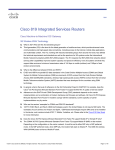

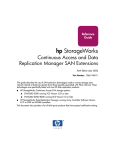
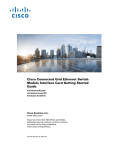
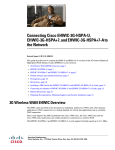
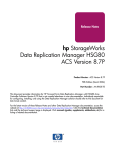

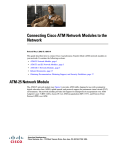
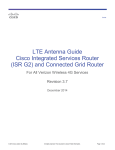
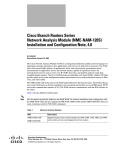
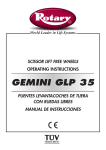
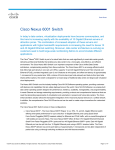
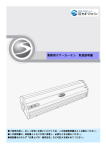

![Identifying Embeded Web Servers - [media.blackhat.com]](http://vs1.manualzilla.com/store/data/005833288_1-dd26f65aacb79f754f7b5aa134b8197a-150x150.png)






